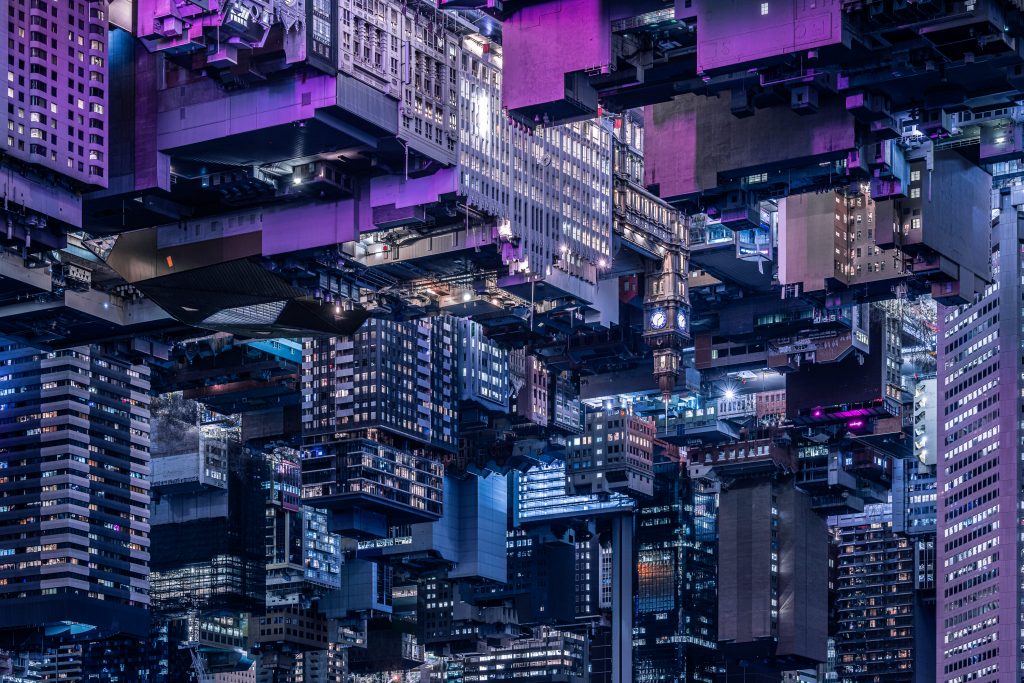Photographer Tom Blachford’s New “Centro Verso” Series
For this series, the artist turned the lens upside down and to his hometown of Melbourne, Australia

Tom Blachford‘s Centro Verso photo series flips the lens in a few ways. These upside-down images are of his hometown Melbourne, and have futuristic and dystopian qualities—unlike his previous, inherently warm but noir Midnight Modern collections. This new project is also Blachford’s first foray into CAD (computer-aided design) and 3D printing, programming and more. It has all culminated in a show at Melbourne’s Backwoods Gallery (on now through 8 December) where his striking photographs are on display alongside light sculptures. We spoke with the artist ahead of the show’s opening about misleading his audience, learning a new skill and more.

How did this project—from your emotion to planning to post-production—differ, since it’s your hometown?
I’ve been wanting to shoot something here for years but was waiting for the right opportunity. I was offered unrestricted access to a 57th floor rooftop in the middle of the city for a commission and it was that opportunity that really spurred things on. Once I had taken the images I actually wanted to try and make it look as little like Melbourne as possible. For the past few years, my work has centered on trying to create images that made it difficult to tell when something was taken—whether day or night, 1957 or 2050. For this project, it was about trying to confuse sense of place as well as time. Even born-and-bred Melbournians think the photos were taken in Hong Kong or Tokyo.

Was there something you wanted to show about Melbourne through this series that you feel is missing elsewhere?
I definitely wanted to avoid cliches. Photography of our city usually depicts our laneways, the river or street art. I wanted to try and make people look at it differently. To begin by thinking it couldn’t possibly be Melbourne and then slowly orienting themselves by looking closer and trying to find landmarks within the density.

You’re also venturing into foreign territory with your 3D sculptures—was there a catalyst that sparked your interest in veering from photography?
Earlier in the year I travelled to Georgia to photograph a building I had been in love with for years—it has an amazing Soviet, Tetris vibe. When I finally made it there to take the image I found that the view, the lighting and the perspective just didn’t do it justice. I thought there had to be a better way to explore and communicate form and geometries without having to traipse around the world (which I do still love doing).
How has the process differed from when you were learning photography?
I think I brought to it my understanding of composition, proportion and geometry that I have honed over my decade as an architectural photographer, but it was also a huge challenging and exciting learning curve. Learning CAD from scratch and as well as 3D printing, electronics and programming.

How do the sculptures and photographs work together in the show?
The images propose a suspended city defying engineering and creating a type of dystopia. The sculptures are hung from the gallery ceiling to continue that effect as you look up you see the 3D buildings being continued up into the darkness of infinity.

What do you want viewers to experience here, from the illuminated sculptures and photographs together?
The whole experience is designed to make viewers feel as if they are in a sci-fi film; Inception meets Blade Runner. I commissioned a 30-minute soundscape by local producer Richard Walker that was produced in part on the same synth used by Vangelis to produce the Blade Runner soundtrack. It all ties together amazingly well, I think!
Images courtesy of Tom Blachford












